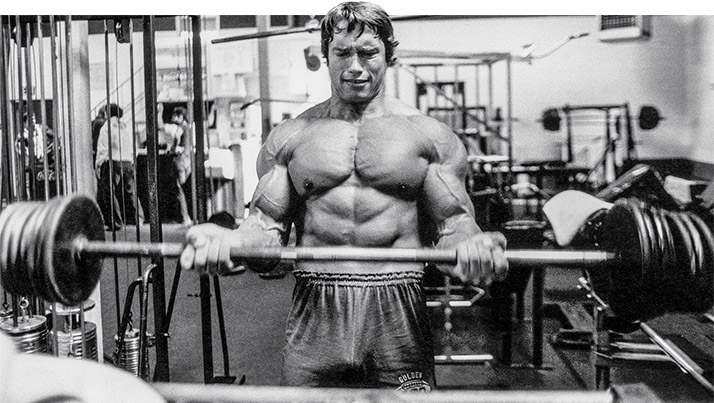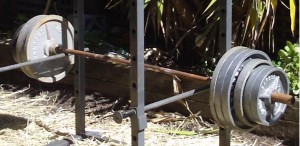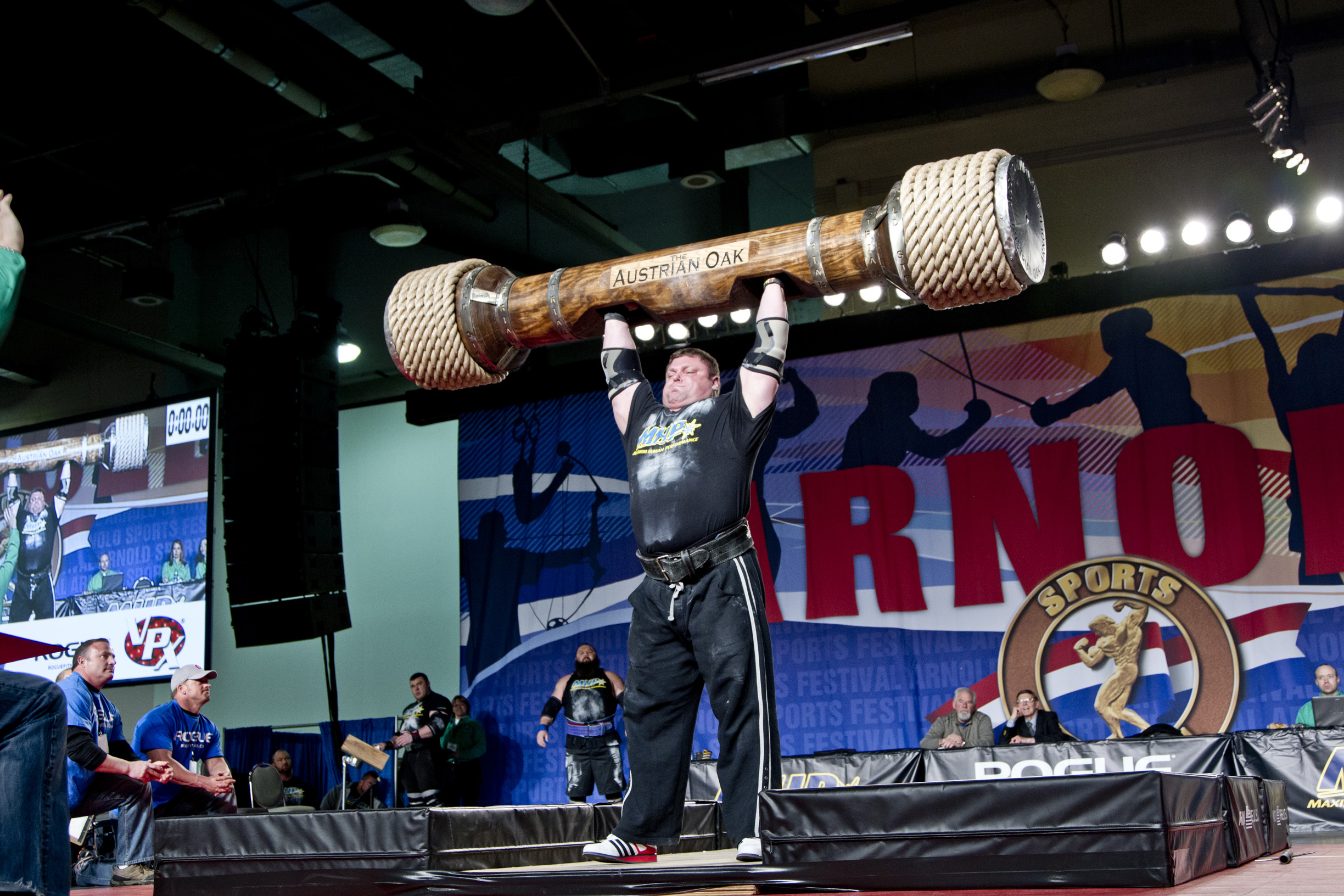I’ve always been a staunch advocate of teaching correct form on all exercises, for I believe it’s critical to making progress and avoiding injuries. Since I deal almost exclusively with athletes, I have everyone start with the basic routine – that is, unless someone is physically unable to do a certain lift. The big three exercises form the foundation for future strength work, so everyone learns how to do full squats, power cleans and bench presses. I teach everyone the same technique, regardless of background, body type or strength level.
I also recognize, however, the importance of taking individual differences into consideration. In my opinion that’s a major shortcoming of a great many coaches and trainers. They have only one way of doing a certain lift, period. If lifters can’t learn to do it exactly as prescribed, they’re forced to stay with light weights until they can satisfy the coach. That’s a commendable goal, as good form is essential, but only to a certain point. I’ve watched inflexible coaches ruin an athlete’s confidence by insisting that he perform some exercise he just couldn’t do. It wasn’t from lack of trying – his levers and structure just didn’t permit him to do the movements as required.
Take the full squat. I have everyone start with the basic shoulder-width foot position, which fits most people nicely. At the first session, however, I can spot inflexibility.
I also teach lifter to keep their upper bodies as upright as possible. Bending too far forward is quite stressful to the lower back – especially in the early going, for the lumbars are always weaker than the hips and legs. Invariably, though, I have a few athletes who find it virtually impossible to go low enough without bending forward. Generally, it’s due to a lack of flexibility in the back of their calves and typically rectifies itself after a few weeks of squatting. That doesn’t always happen, though.
In some cases athletes continue to lean forward even after their ankle flexibility improves. When that occurs, do you have them limit the weight on the bar until they master the proper technique? Sometimes that’s the correct course of action, for if faulty form is likely to cause an injury, the athletes need to limit the weight and spend more time honing techniques. At other times, however, if lifters have improved their lumbar strength and continue to have difficulty maintaining an upright torso, I allow them to proceed.
The reason is simple. Leaning works best for certain people. Hugh Cassidy was a leaner, and he did it on purpose. He believed it allowed him to handle more weight, and he became a world champion in the process. The upright form didn’t fit him, and he understood that fact. He also coached a large number of other lifters who used his leaning forward style to great success.
Some of my strongest squatters have been leaners, and it would have been a mistake to change them. When athletes need to lean forward I make certain that they spend lots of effort overdeveloping their lumbars. That safety measure makes them much stronger in all of their pulling exercises as well – sort of an added bonus. If I were dogmatic and insisted that they limit the weight on the bar until they could do a perfect upright squat, I’d be doing them a disservice. They’d never build a high level of hip and leg strength.
The same idea holds true for the power clean. It involves the most muscle groups of all the basic lifts, so form is critical. One of the fundamental rules for performing power cleans is to keep your arms straight until the bar passes your belly button or just below that point. If you bend your arms too soon, it adversely affects the action of your powerful traps. It also means that your arms won’t be available for the final upward explosion that’s so critical to the finish of the lift. Your arms shouldn’t bend until after your traps have contracted.
Nevertheless, it’s very difficult for many beginners to learn the correct sequence. No matter how many times I tell some people that they’re doing it incorrectly, they often just can’t make the necessary adjustments. There was a time when I, too, would be dogmatic about allowing lifters to add weight until they could do the sequence precisely, but I’ve learned to soften my approach. Being dogmatic isn’t always in the lifter’s best interest.
One basketball player was giving me fits. He was athletically gifted and intelligent enough to understand what I was telling him to do, but he couldn’t stop himself from bending his arms too soon. It was frustrating for both of us, for he really was trying his best. I realized that if I persisted, I was going to end up losing him, meaning that he’d start skipping workouts or coming to the weight room when I wasn’t around. I didn’t want that to happen, as he was to be one of our key players for the next season.
So one day I told him to forget the form mistake and see how much he could handle. “Work up to a max single,” I told him, figuring the change would do him some good. He continued to bend his arms much too soon, but as the weight got heavier, he didn’t bend them quite as much. I also noticed that he was doing everything else correctly – keeping the bar extremely close to his body and snapping it at the top. Although he did bend his arms early, he still had a nice pop at the top. To the surprise of both of us, he did 240, more than anyone else on the basketball team, and the success really helped his confidence. From that day on I let him do the lift in his own way, and he moved it to 260 before the season started.
Most coaches over-coach the power clean. Maybe that’s one of the reasons so man have dropped it from their strength programs. It really doesn’t have to be performed perfectly in order for athletes to derive benefits form it – unless, of course, the form faults are glaring and obviously risky. Even when they don’t perform the power clean precisely, they still work their legs, hips, back and shoulders. Naturally, if they could hone their form, they’d be able to handle more weight and would therefore gain even more strength, although there are exceptions.
There’s also a general exception to the perfect-form rule for athletes who plan to enter Olympic competition. They must learn exact form, for the power clean is a basic movement for all the others.
When I find myself harping at some beginner, I remind myself that some of the strongest weightlifters had flagrant form mistakes in their pulls. Norb Schemansky was one of my early heroes in the sport. The first time I saw him is fixed in my memory forever. It was at the ’64 Olympic Trials, and I recall his Herculean physique standing over the bar, rocking slowly back and forth, seemingly willing the bar to vault to arm’s length. I also recall just as vividly that Norb always bent his arms far too soon on both his snatches and his cleans – too soon, according to the textbooks, but not too soon for him. How could he finish the lift, I wondered, but finish it he did. He finished with a flourish, snatching 363 in split style. His early arm bend didn’t hurt him at all, In fact, it helped.
Certainly the most vivid example of a champion weightlifter who broke all the rules of pulling was Mario Martinez. One winter I stayed with a friend in San Francisco and took the opportunity to train at Jim Schmitz’s Sports Palace. Mario was the reigning Heavyweight champion at that time, but after watching him go through a clean workout I was shocked. I’d never seen anyone bend his arms so much. The start of his pull resembled a bent-over row. Yet in spite of his form he was handling some impressive poundages. What was going on? The next time he cleaned, I watched more closely. His pull to his belt was really atrocious, but once the bar reached that height everything changed. His torso shot upright, his arms were straight, the bar was tucked in close t his body and he was in perfect position to drive the bar upward.
Mario’s technique was extremely unorthodox, no question about it, and no coach would ever teach a young lifter to pull that way, but the bottom line was that it worked well for Mario. He had confidence in his style of pulling, and it would have been a mistake to alter it.
Too many coaches spend too much time badgering their athletes on the finer points of lifting. Sure, I realize the importance of form, but when I notice people deviating from the ground rules of technique on some lift and it seems to fit them nicely, I leave them alone and encourage them to add more weight to the bar. In the final analysis, getting stronger has to do with handling heavier weights. As with my basketball player, sometime when the weight gets heavier form actually improves. It’s often difficult to get the feel of certain lifts when you use light weights.
The power snatch is another example of an exercise on which it’s all right to bend the rules of form – if the situation calls for it. It’s an ideal light-day pulling movement and a useful substitute exercise when lifters who can’t do the power clean, something that usually occurs because of a shoulder injury. Now, if the athletes are planning on entering Olympic-style competition, they must learn to lock the bar out overhead from the very beginning. They can’t bend their arms even slightly because that’s cause for disqualification. If they’re using the exercise to enhance overall strength, however, I allow my athletes to press out the heavier sets. I do that because the combination of pulling and pressing activates many different muscles in the shoulders and upper back, muscles that are very useful for all athletes. Pressing out heavy weights with the wide snatch grip brings some new muscles into the mix, and that’s a good thing. I learned in the 1960s that many European Olympic lifters power snatched in that style and pressed the weight out on purpose as they found it developed strength and eventually aided them in locking out maximum poundages.
The same theme of paying attention to individual differences also applies to programs. A trap that all trainees fall into, regardless of I.Q., is that they get locked into some program that is very effective for their training partner or another lifter but doesn’t bring them the same results, or they select some routine from a magazine that was supposedly written by one of their heroes and follow it religiously. Even when their numbers slip backward they stick with it. After all, if it worked for Mr. Neighbor . . . Keep in mind that the odds of any name bodybuilder or professional athlete actually writing an article are slim at best.
There’s a long-standing truism in strength training that the very best program is the one that brings you results. The reason so many people have trouble applying that basic concept is, it’s just too simple, and, unfortunately, most people don’t believe in their own ability to design a workable program. Hence, they turn to outside experts without the advice to their own needs and individual abilities. The fact is, no one understands your body the way you do, and you really are your own best coach. No one else knows that certain pressing movements, no matter how light you go on them, still cause you severe pain for several days following a workout. No one knows that you respond best to several short exercise bouts each week – that, although it goes against the grain of most conventional literature, you’ve found that when you take off two or three days between workouts, your lifts suffer.
Maybe the opposite is true for you. When you attempt to increase your workload by training more than three days a week you not only regress, but you also usually get sick. I’m frequently asked about the training programs of the lifters at the famous York Barbell Club in the late ‘60s. Many people believe that Bob Hoffman set up schedules and monitored the workouts, but nothing could be further from the truth. In the spring, when the athletes were getting ready for the Nationals, there would often be two dozen national champions and at least three world-record holders in the York gym, and no two athletes trained alike. In this age in which programs are designed by computers some people might consider that rather improbable, but it’s a fact. Sure, most did many of the same exercises – presses, snatches, cleans and squats – but everyone had his own workout plan. Some did lots of sets and reps and trained for hours at a stretch. Russ Knipp, Kenny Moore and Ernie Pickett put in long sessions. Others, like Bill March and Bob Bednarski would be in and out of the gym in less than an hour.
Some did lots of auxiliary work – high pulls, hang cleans, good mornings, shrugs, inclines, dips and push presses – but some, such as Joe Puleo and Tony Garcy concentrated on the three competitive lifts and some squats. The fundamental reason they all made it to the top was that they understood how their bodies responded to exercises and didn’t try to go against the grain.
That basic lesson is one of the hardest things to learn in strength training, partly because we’re flooded with so much information. While there seems to be a publication available for every conceivable situation, not so many years ago the information superhighway was rather sparsely traveled, which meant that anyone aspiring to a higher level of strength had to figure out what to do on his or her own. The champs didn’t copy someone else’s routine, but, rather, devised ones of their own – routines that fit their particular needs.
That’s exactly what modern strength athletes must do as well. Think of the article you read as an outline, a list of suggestions, and not an edict carved in stone. Modify the sets-and-reps-and-rest-days formula to fit your specific needs and get rid of those recommended exercises that you know from experience will bring you more grief than pleasure. Strength training should be an enjoyable activity. If you find yourself dreading going to the gym on certain days it might be wise to sit down and revamp your program.
Don’t get caught up in the notion that there’s only one way to achieve results in the weight room.
There are as many productive methods as there are creative minds.






























